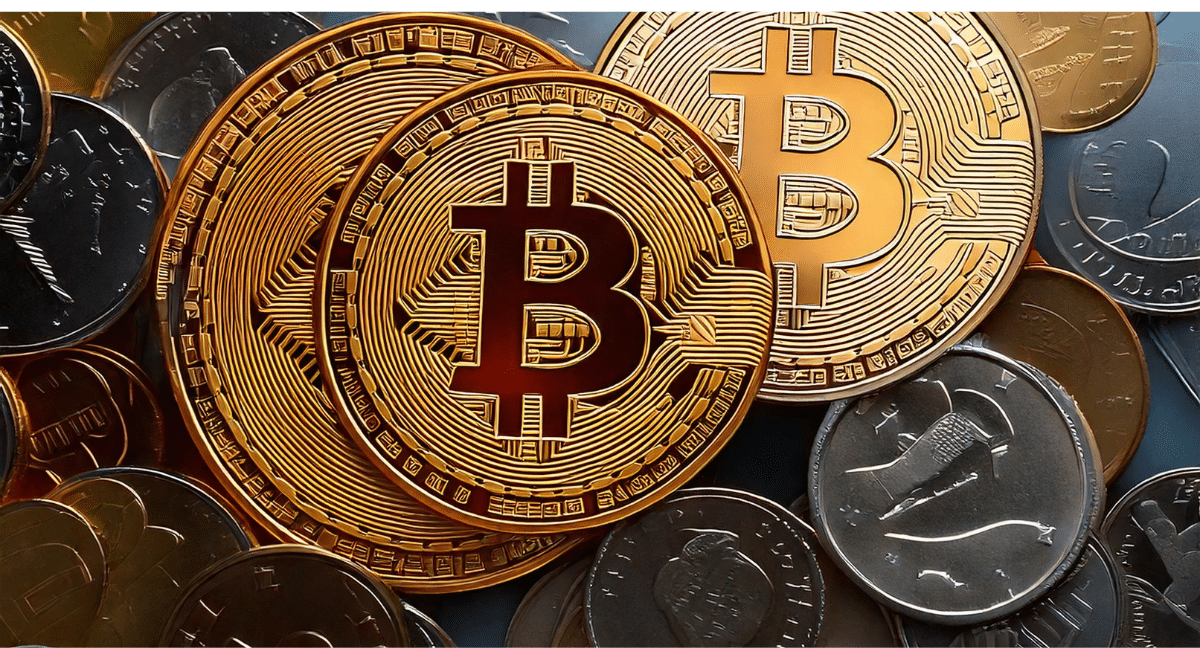Knowing the difference between Bitcoin and altcoins is essential as cryptocurrencies become increasingly popular as investment options. This guide will compare Bitcoin and altcoins to help any investor make an educated decision about their digital asset investment.
The digital asset ecosystem has experienced substantial growth in recent days in both the supply and demand of Bitcoin and altcoins. A common estimate states that there are between 9,000 and 20,000 different types of cryptocurrencies with different kinds of value, utility, and adoption rates. It’s important for every investor to differentiate between Bitcoin and altcoins, as each offers something unique to users.
Defining Bitcoin
Bitcoin (BTC) is the pioneer cryptocurrency that was created in 2009 by an anonymous person or group going by the pseudonym Satoshi Nakamoto. Bitcoin runs on a decentralized ecosystem that isn’t controlled by any government or financial institution and all transactions are recorded on a blockchain, which is a type of public ledger that’s maintained by a global network of computers. The value of BTC is determined by the economic principles of supply and demand and is currently accepted as a means of exchange by many merchants globally.
Defining Altcoins
The term altcoin is a composite word made from the words “alternative” and “coin.” Considering that Bitcoin is considered the original cryptocurrency, altcoin refers to any other digital asset that’s not BTC, beginning with Ether (ETH), which is the most popular of all altcoins. Every altcoin is grouped into a different subcategory based on its functionality. The most common functions include stablecoins, tokens, privacy coins, play-to-earn tokens, utility coins, meme coins, and governance tokens. The main difference between Bitcoin and altcoins is that most altcoins are designed to address a specific limitation that designers felt existed within the digital space.
For example, the designers of the Ethereum blockchain, first conceived in 2013, dreamed of decentralized applications (DApps) using smart contracts. Nowadays, many different altcoins don’t derive from Bitcoin or Ethereum but use different blockchains and consensus mechanisms designed for specific use cases.
The Rising Popularity of Altcoins
There are currently thousands of altcoins available serving different purposes based on their underlying technologies. Most altcoins have some similarities that enable them make different contributions in the digital asset world in areas like:
Innovation and experimentation: Altcoin developers have explored new governance models and consensus mechanisms and expanded their boundaries to include decentralized finance (DeFi).
Accessibility: The large number of altcoins has given crypto investors a new way to experiment with different digital assets.
Different use cases: Altcoins have numerous use cases, starting with play-to-earn tokens used as in-game currency and stablecoins that peg their value to tangible underlying assets and are backed by fiat currency reserves.
The Difference between Bitcoin and Altcoins
The greatest similarity between Bitcoin and altcoins is that both leverage blockchain technology to create a trustless distributed ledger. However, regardless of the great fact, Bitcoin vs. altcoins have a number of tangible differences:
Longevity: Bitcoin, the first cryptocurrency introduced to the world in 2019, is the oldest digital asset and remains the most popular one 15 years later.
Value: Bitcoin is currently the largest cryptocurrency by market cap of approximately $3.15 trillion at the time of writing, comprising over 50% of the entire crypto class market cap.
Volatility: Compared to altcoins, Bitcoin is less volatile because of its prominence and higher market liquidity. Altcoins, on the other hand, are comparatively more volatile, and their prices can fluctuate based on many issues, including celebrity endorsements, technological advancements, breaking news, or investor sentiments.
When compared to altcoins, Bitcoin benefits from its position as the pioneer cryptocurrency. A few altcoins have developed a serious following, but other newer, less popular ones end up failing. Bitcoin’s 15-year track record appears set to continue, especially as institutional adoption takes foot.
Positioning Bitcoin as Potential Future Money
Altcoins are mostly designed to serve a specific purpose or address an existential need. Bitcoin, on the other hand, continues to address new functions as the ecosystem matures foundationally or through incremental layers. Bitcoin’s greatest positive is its potential to become a store of value as the network continues to mature. Experts within the crypto space believe that Bitcoin has exclusive characteristics that no other digital asset has, which makes it a secure, decentralized digital currency.
Bitcoin vs. Altcoins: Investment Opportunities
Consider the following factors when comparing Bitcoin vs. altcoins as investment options:
1. Market Dominance
Bitcoin has the largest market cap among cryptocurrencies, often holding up to 50% of the total market share. This market dominance results from established trust and widespread adoption. Altcoins, on the other hand, have relatively lower market caps.
2. Regulatory Landscape
Bitcoin is widely recognized and increasingly accepted by regulators globally. While regulation may vary in different jurisdictions, Bitcoin enjoys a growing trend of acceptance into traditional financial systems, with countries like El Salvador making it legal tender. Altcoins, on the other hand, still face severe regulatory challenges. Some still operate in legal grey areas, and some of their innovations still attract scrutiny from regulators.
3. Volatility and Risk
Bitcoin is a relatively new asset and, therefore, experiences a level of volatility leading to significant price fluctuations. Thankfully, the asset’s liquidity and market size mostly dampen the extremes compared to altcoins. As a result, Altcoins are more volatile than BTC, given their lower liquidity and smaller market caps, thereby increasing investment risk.
4. Technological Innovation
Bitcoin enjoys several beneficial technological advancements compared to altcoins. One of the most notable ones is the Lightning Network, which facilitates enhanced scalability and faster transactions, thereby addressing the network’s initial challenges. In most cases, altcoins are mainly testing grounds for emerging technologies. On the positive side, some leading altcoins have introduced special features like smart contracts, improved consensus mechanisms, faster transaction speeds, and privacy enhancements.
5. Store of Value
Bitcoin is now considered digital gold thanks to its characteristic 21 million coin limit. The scarcity will eventually make BTC an attractive option as a hedge against fiat currency volatility, thereby making the asset a potential store of value in the future. Altcoins, on the other hand, have different monetary policies, and since most don’t have a supply limit, they could become subject to inflationary pressures.
6. Liquidity and Trading
Bitcoin enjoys high liquidity meaning it can withstand significant trade volumes without experiencing serious price limits. This has made the asset attractive to large traders and institutional investors. Altcoins are still subject to liquidity challenges, leading to higher spreads and lower trade volumes. As a result, it can become more costly to buy and sell altcoins.
The Parting Shot
While there are vast and varied differences between Bitcoin vs. altcoins, BTC has so far maintained its gold standard status. The asset enjoys greater market dominance, better security, wider adoption, and a proven track record, therefore becoming superior to altcoins. If you plan to begin your cryptocurrency investment journey, take advantage of this website to learn more about how Bitcoin vs. altcoins differ so you can make an informed financial decision.



























